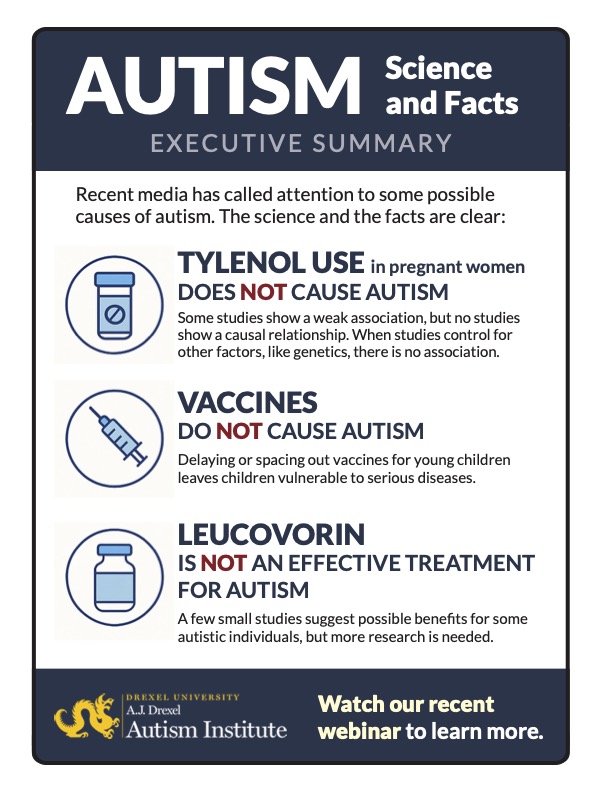Autism Science and Facts
In response to recent national conversations surrounding autism, the A.J. Drexel Autism Institute hosted a timely panel discussion on September 29, 2025. Moderated by Dr. Diana Robins, the webinar featured expert insights from Diana Schendel PhD, Dena Gassner, PhD, and Matt Lerner, PhD. The panel addressed pressing questions about autism research and public discourse, including topics such as Tylenol, vaccines, and Leucovorin. The event emphasized the importance of rigorous science and provided a live Q&A session to engage attendees directly. For more information please look at our, Frequent Asked Questions document developed from audience questions.
Executive Summary

There has been a lot of media attention in recent weeks on some possible causes of autism. The science and the facts point to a few important findings.
First, use of Tylenol by pregnant women does not cause autism. Although some studies show a weak association (Note. Associations, or correlations, do not prove causation) between Tylenol use and autism, studies that carefully control for other important factors, such as genetics, show no association. Tylenol is the safest pain reliever during pregnancy, and use of Tylenol to control fever and illness is important – we urge people to consult with their healthcare professionals to make medical decisions.
Second, vaccines and the components of vaccines do not cause autism. Recommendations to space out vaccines rather than getting combination vaccines leave children vulnerable to the diseases that vaccines prevent. Third, leucovorin (folinic acid) is not recognized as an effective treatment for autism. Several very small studies suggest it may help some people, but much more research needs to be done.
Finally, our recorded webinar and the questions and answers below offer a lot of resources for people who want to learn more. Please continue reading to better understand how scientists measure prevalence (how many people have a condition), how healthcare professionals can communicate with patients and their families about autism, how people can advocate for access to high quality autism services, and more.